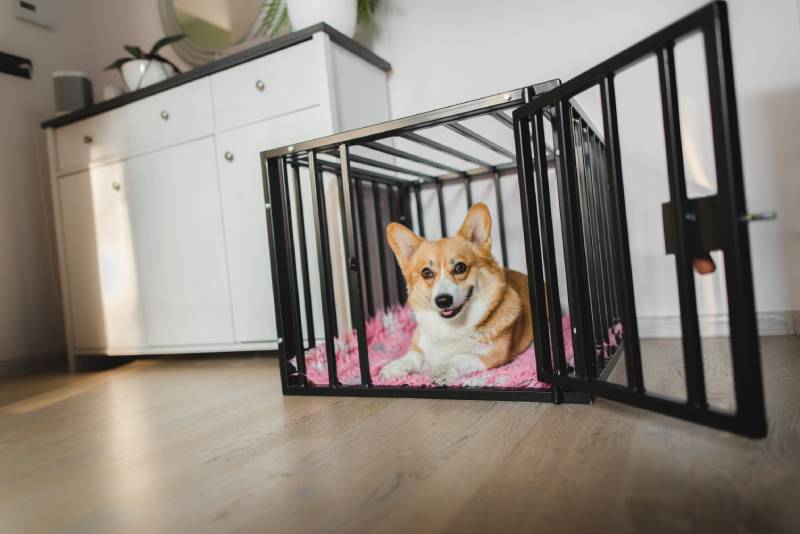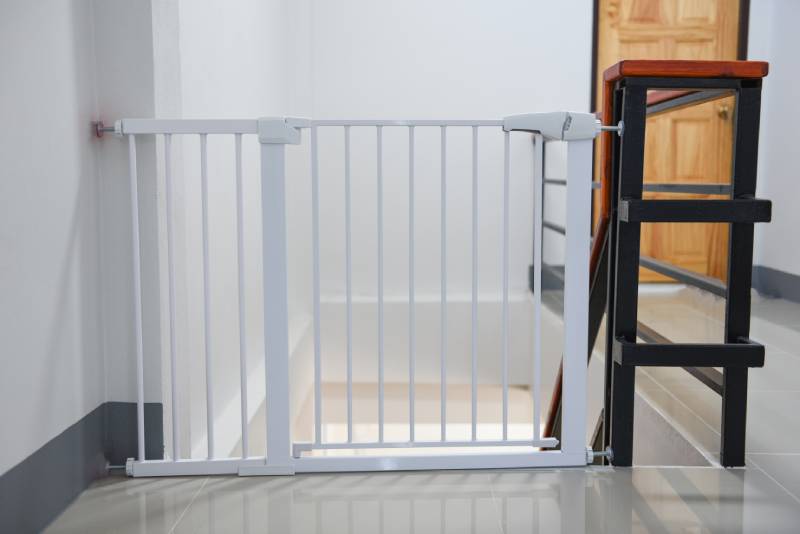Crate training is a relatively new practice that began in the late 19th or early 20th century. The exact history is hazy, but broadly speaking, militaries and travelers on trains and planes had a growing need to transport their dogs in a clean, safe way. Today, crate training is widely recognized as a way to confine your dog, give them a comfortable and quiet space, and keep them safe in emergencies.
However, crate training is new, and there’s another school of thought that the practice is cruel and unnecessary. In fact, in both Sweden and Finland, dogs can only be placed in crates of certain dimensions and under some circumstances. This highlights the multiple approaches to raising a dog, so it’s natural you’d be curious.
Are there benefits to not crate training a dog? Limited data on the topic makes it highly subjective and subject to eternal debate. The underlying ideas are pretty easy to understand, however. Below, we’ll break down the pros and cons of crate training and not crate training and discuss how to safely confine your dog if you don’t want to use a crate.

Pros & Cons of Not Crate Training
We should preface this by saying that the arguments in favor of not crate training are subjective and commonly contested. The decision to crate train is ultimately yours, but there’s great educational value in a balanced view of the possible benefits of not crate training. Check out the pros and cons below and compare them with the pros and cons of crate training to form your own opinion on what works best with your dog’s lifestyle.
- Provides freedom of movement: Some dogs are inconsolably afraid or anxious about being confined in a crate, and not using a crate allows them to choose where they want to be.
- Strengthens your bond: Many dog owners report that not confining their dog in a crate helps strengthen their relationship by spending more time together.
- Improved emotional development: A common argument states that dogs not confined in crates learn how to self-soothe faster and in a healthier way.
- Logistics: Crates are convenient, and it’s logistically challenging to set up alternative confinement solutions.
- Might delay potty training: Housebreaking is slower without crate training because your dog doesn’t have clear boundaries on where to go and not go potty.
- Difficulty traveling: Dogs that aren’t crate trained are harder to take places; they require firm leash handling when you’re out and about, and crates are compulsory on planes, buses, and hotels.

Pros & Cons of Crate Training
Crate training has compelling evidence in favor of it as a training tool. The main problems with crate training arise when crates are misused to punish dogs or used to confine them for long periods.
- Helps with potty training: When used properly, crate training provides clear cut boundaries and helps streamline potty training for dogs. However their age and their sphincter control must be taken into consideration.
- Behavioral management:Crates are invaluable for confining destructive dogs and keeping undesirable behaviors under control.
- Travel anywhere: Crated dogs can safely travel the world, go on planes, go to vet visits, and stay in hotels with you.
- Stress: Some dogs are especially sensitive to confinement and can freak out in a crate, potentially causing harm to themselves and exacerbating behavioral issues.
- Difficulty: Crate training can be a tricky process to help your dog navigate, requiring significant patience and effort on your part.
- Easy to misuse: Improper use of crates, such as punishment or confinement for long stints while you’re away from home, can negatively reinforce your dog’s view of the crate and cause stress-related behavioral issues.

When to Not Crate Train: How to Safely Confine Your Dog Without a Crate
You shouldn’t crate-train your dog if they have separation anxiety or if they can’t cope with being confined. Dogs with these problems often become severely agitated if confined in a crate, sometimes even right by your bedside.
This can lead to destructive chewing and digging to try and escape the crate. This can be dangerous if, for instance, your dog gnaws through a plastic part of a crate or gets cut on a sharp metal piece. In these cases, we suggest exploring other options for safely confining your dog, which we’ll discuss below. Remember that you should always consult with your vet or veterinary behaviorist if you are considering crating your dog to manage a behavioral problem.
Tips for Safely Confining Your Dog Without a Crate:
- Thoroughly dog-proof any space where you confine your dog and remove objects or furniture they can damage or hurt themselves with.
- Use baby gates to fence off a dog-proofed room such as a kitchen or laundry room.
- If you have a spare room, you can make it your dog’s room with a pet bed, play area, feeding area, and all their favorite items.
- Try adding a doggie monitor to your dog’s area with two-way video and audio communication, which helps them feel secure when you’re away from home.


Conclusion
Crate training is an important tool for countless dog owners to manage behavioral problems, safely travel, and structure the housebreaking process, but it’s not perfect. The time dogs spend in the crate must be limited and not take up the majority of their day, and the time should be strictly adjusted to your dog’s needs. Some dogs don’t tolerate much time in a crate comfortably. Alternative solutions like a dog-proofed room may help in those cases.
Featured Image Credit: sophiecat, Shutterstock











